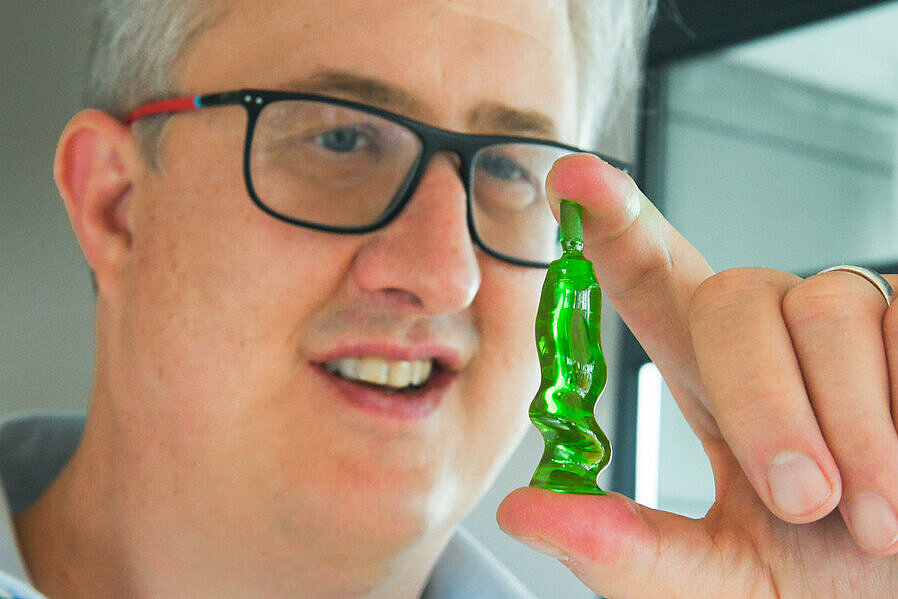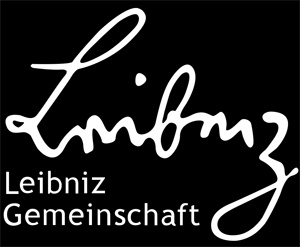This picture looks like a great work of art. Red and yellow dots shine from the darkness—arranged in strict fashion along horizontal and vertical lines—some only once, some of them twice. The picture was not, however, created with brushstrokes in a studio but with an electron microscope at Cornell University in Ithaka, New York, by an international research team led by David Muller, a physics professor. Although radiantly beautiful, the picture’s real worth stems from its scientific merit. As such, it was recently included in the Guinness Book of World Records.
“It is the highest resolution that an electron microscope has ever in the world been able to achieve with the help of algorithms,” says Matthias Bickermann, deputy director of the Adlershof-based Leibniz-Institute for Crystal Growth (IKZ), which is part of Forschungsverbund Berlin, and head of the department Volume Chrystals. The materials researcher, who also teaches crystal growth at Technical University Berlin, produced the crucial material for this record together with his team. “We have grown the praseodymium orthoscandate PrScO3 crystal,” says Bickermann. This crystal has a “perovskite structure” with an almost cubic arrangement. A particular challenge of creating the image was the very small distance between two praseodymium atoms, which is only 59 picometre across (a billionth of a millimetre).
The Cornell team used and refined a special imaging technique to examine the PrScO3 crystal. It is done by examining multiple overlapping images using an area detector. In doing so, the electron beams hit the atoms from different angles, creating various diffraction images, which then serves to calculate the full image of the sample. Until now, such calculations have never been done using these amounts of data.
Ultimately, the researchers were successful in zooming in on the atoms a 100 million times. The prerequisite to do so, however, was a crystal built to absolute perfection. The only possible supplier was the IKZ. “We have been growing crystals with a perovskite structure for about 25 years,” says Bickermann. Among other things, perovskites are used for microscope actuators, solar cells, superconductors, and novel random access storage, better known as RAM. Cooperation between Cornell University and IKZ has been long-standing. Grown at IKZ with the necessary purity and perfection, the PrScO3 crystal was another instance of this.
Bickermann leads the 12-strong team of the IKZ section “Oxides & Fluorides”, who were responsible for growing it. The team is made up of two PhD researchers, five scientists, and five technicians. “The technical team grows most of the crystals,” says Bickermann. The science team is concerned mainly with researching the growth of new materials. Their record-breaking study of crystal structures was published in the Science journal, which also mentions IKZ technician Isabel Hanke and Steffen Gantschow, a physicist.
In any case, working with crystals seems to be a fascinating endeavour indeed, in addition to their sparkling and glittering appearance. Crystals are the basis of many technology devices, including smartphones and computer chips. “It makes us proud to be working on the foundations.” The materials researcher is fascinated by the perfect order in which the atoms are arranged. “You can pick up a crystal, they can be touched,” says Bickermann. That is more than most researchers can claim in science nowadays if they work with, say, quantum materials or software.
Paul Janositz for Adlershof Journal
Published: Atoms enlarged 100 million times - Technology Park Berlin Adlershof


